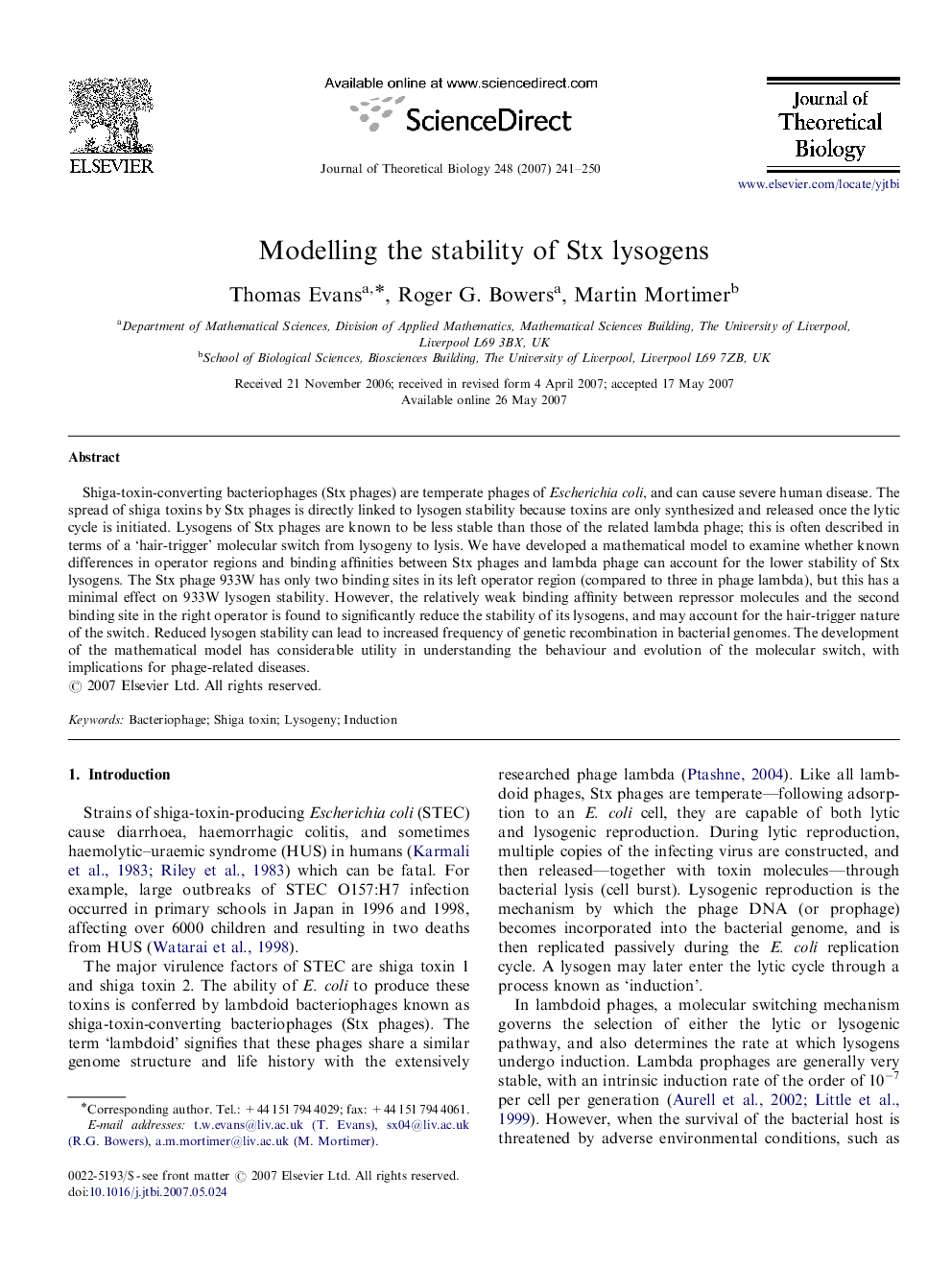| Article ID | Journal | Published Year | Pages | File Type |
|---|---|---|---|---|
| 4499011 | Journal of Theoretical Biology | 2007 | 10 Pages |
Abstract
Shiga-toxin-converting bacteriophages (Stx phages) are temperate phages of Escherichia coli, and can cause severe human disease. The spread of shiga toxins by Stx phages is directly linked to lysogen stability because toxins are only synthesized and released once the lytic cycle is initiated. Lysogens of Stx phages are known to be less stable than those of the related lambda phage; this is often described in terms of a 'hair-trigger' molecular switch from lysogeny to lysis. We have developed a mathematical model to examine whether known differences in operator regions and binding affinities between Stx phages and lambda phage can account for the lower stability of Stx lysogens. The Stx phage 933W has only two binding sites in its left operator region (compared to three in phage lambda), but this has a minimal effect on 933W lysogen stability. However, the relatively weak binding affinity between repressor molecules and the second binding site in the right operator is found to significantly reduce the stability of its lysogens, and may account for the hair-trigger nature of the switch. Reduced lysogen stability can lead to increased frequency of genetic recombination in bacterial genomes. The development of the mathematical model has considerable utility in understanding the behaviour and evolution of the molecular switch, with implications for phage-related diseases.
Related Topics
Life Sciences
Agricultural and Biological Sciences
Agricultural and Biological Sciences (General)
Authors
Thomas Evans, Roger G. Bowers, Martin Mortimer,
